Effective kitchen ventilation has always been a functional necessity, tasked with removing smoke, steam, odors, and airborne grease. However, in modern kitchen design, ventilation systems have evolved far beyond basic utility. For 2025, the leading trends treat ventilation as a core design element, pushing in two exciting directions: making it either completely invisible for a seamless look or transforming it into a stunning architectural focal point. Coupled with advancements in smart technology and a focus on quiet performance, the latest kitchen ventilation solutions are smarter, more stylish, and more integral to a healthy home environment than ever before.
This guide explores the key trends shaping how we think about clean air in the contemporary kitchen.
Trend 1: The “Invisible” Kitchen – Hidden & Integrated Ventilation
The drive towards minimalist, uncluttered aesthetics has made hidden ventilation one of the most significant trends. The goal is to achieve powerful air purification without visually interrupting clean lines of cabinetry and design.
- Custom Hood Inserts/Liners:
- The Trend: This is the most popular method for achieving a hidden look. A powerful ventilation “insert” (the motor, filters, and lights) is installed inside a custom-built enclosure that matches the kitchen cabinetry or wall finish. This allows the ventilation to disappear completely into the design, appearing as just another cabinet or a simple architectural feature.
- Why it’s Popular: Offers complete design flexibility while housing a high-performance ventilation unit.
- Downdraft Ventilation Systems:
- The Trend: For kitchens where an overhead hood is undesirable (especially on islands where a bulky hood would obstruct views), downdraft systems are a sleek, modern solution. These units are integrated directly into or behind the cooktop and pop up when needed, pulling smoke and steam downwards or backwards.
- Considerations: While excellent for maintaining a minimalist aesthetic, physics dictates that downdraft systems are generally less effective than overhead hoods, as they have to fight the natural upward movement of heat and steam. They are best suited for electric or induction cooktops and less intensive cooking styles.
- Ceiling Cassette Ventilators:
- The Trend: A high-end solution borrowed from commercial design, these units are installed flush into the ceiling directly above the cooktop. They offer a very discreet, minimalist look for open-concept kitchens and islands.
- Considerations: They need to be powerful and have a large capture area to be effective from a greater distance. Installation is complex and requires significant ceiling access and proper ducting.
Trend 2: The Statement Hood – Ventilation as a Focal Point
In direct contrast to the hidden trend, many designers are using the range hood as a primary architectural or decorative feature.
- The Trend: Instead of hiding it, the range hood is celebrated as a sculptural centerpiece of the kitchen.
- Popular Styles:
- Mixed Materials: Hoods featuring a combination of materials are very current. Think plaster or wood surrounds with metal banding (matte black, brass), or stainless steel mixed with glass.
- Unique Shapes: Moving beyond the standard box or pyramid, look for hoods with curved, angled, or unique geometric forms that act as functional art.
- Bold Colors & Finishes: While stainless steel is classic, hoods in matte black, crisp white, deep blues, or warm metals like brass and copper are being used to coordinate with other kitchen accents and make a strong style statement.
Trend 3: Smarter & Quieter Performance
Technology is making kitchen ventilation more intelligent, effective, and pleasant to live with.
- Smart Hoods & Connectivity: A major emerging trend is Wi-Fi-enabled range hoods. These can be controlled via smartphone apps or integrated into smart home systems. Some advanced models feature “cooktop-to-hood” sync technology, where the fan speed automatically adjusts based on the heat level of a compatible cooktop.
- Quieter Operation: Homeowners are demanding powerful ventilation without the roar. This has led to a focus on:
- Lower Sone Ratings: Sones are a measure of perceived loudness; a lower number is quieter. Many modern hoods are engineered for quiet performance, especially on lower settings.
- Inline or Remote Blowers: For an even quieter experience, the noisy motor (blower) is installed remotely in the attic, crawlspace, or outside the home, connected to the hood via ductwork. This significantly reduces noise in the kitchen itself.
- Advanced Features: Look for hoods with heat sensors that automatically turn the fan on or adjust speed when high temperatures are detected, and efficient, dimmable LED lighting for superior task illumination.
Key Considerations That Remain Crucial
While trends evolve, the core principles of effective ventilation remain unchanged:
- Ducted is Always Better: A ducted system that vents air to the outside is always superior to a ductless (recirculating) one. Ductless hoods trap some grease and odors in filters but cannot remove heat, humidity, or harmful combustion byproducts. In a humid climate like Indonesia’s, venting moisture outside is particularly crucial for preventing mold.
- Sufficient Power (CFM): Ensure your fan has an adequate CFM (Cubic Feet per Minute) rating for your cooktop type and cooking style. High-heat cooking, grilling, or wok cooking (popular in many Indonesian cuisines) produces more smoke and grease and requires a higher CFM rating.
- Proper Capture Area: The hood should be at least as wide as your cooktop and ideally extend 3 inches past it on each side for optimal capture.
- Effective Filters: Dishwasher-safe stainless steel baffle filters are generally more durable and effective at trapping grease than aluminum mesh filters.
Conclusion
Kitchen ventilation trends in 2025 are driven by a dual desire for high-performance functionality and sophisticated design integration. Whether you opt for a completely hidden system that blends seamlessly with your cabinetry, or choose a bold, sculptural statement hood to act as a focal point, the emphasis is on clean aesthetics and smart technology. Features like quiet operation, smart connectivity, and efficient performance are becoming standard expectations. By carefully considering both the visual style and the essential performance metrics like CFM and proper ducting, you can select a kitchen ventilation system that not only enhances your design but also contributes significantly to a cleaner, healthier, and more comfortable home environment.


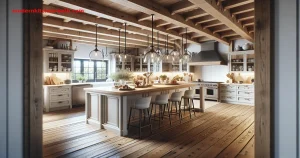
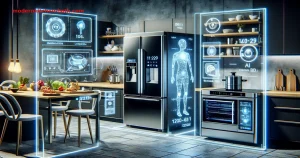
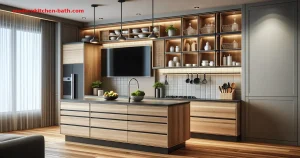
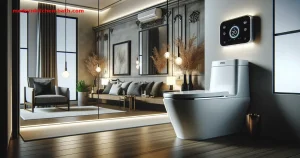
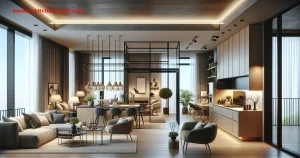
Leave a Comment